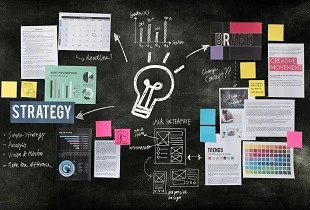Take the next steps toward cross-company process management
Learn how to take governance of supplier and distribution networks and create value for the business
Add bookmark
Business processes do not end at the boundary of a company. It is high time to put the entire value chains at the center of business process management (BPM) to master the pressing challenges regarding resilience and compliance along the end-to-end supply and distribution processes.
Learn how to make interactive customer journey maps with this webinar from Software AG
Since the 1990s, companies have recognized that understanding and continuously optimizing business processes is critical to corporate success and has a major impact on their bottom and top line.
Many companies have established competence centers for process management. They embed the BPM methodology into the organizational structure and actively manage the analysis and optimization of business processes in cooperation with the business lines.
In almost all cases today, these efforts end at the corporate boundary. This means that the internal activities and process steps are described and analyzed in great detail and at great expense. The relationships with suppliers and distributors, however, are documented at best as an interface for the transfer of data, goods and services.
In other words, with the exception of intensive collaborations such as just-in-time production, companies generally do not have an end-to-end understanding of what their entire value chain looks like and where risks and optimization potentials lurk.
It is worth considering whether this is still true today, however. In recent years, we have seen how dramatically a shortage of raw materials affects almost every industry and that many supply chains have moved into an 'at risk' state. This means that resilience and business continuity can only be ensured if the view is broadened and BPM is seen as cross-company analysis and optimization.
Furthermore, new compliance requirements make it necessary to know and analyze the entire supply chain. The German Supply Chain Act has an equivalent in many other countries. It creates a legal framework to improve the protection of the environment and human and children's rights along global supply chains.
Companies that procure intermediate goods or finished products abroad must take responsibility for the production processes and working conditions at their suppliers, trace abuses and put a stop to them. This applies not only to direct partners, but also to all hierarchies in the value chain. Violations of this legal obligation may result in fines or damages.
Related content: Using processes to achieve organizational agility
It is obvious that a fundamental change in process management is imperative. Outlined below is what needs to be done with regard to process management.
Firstly, create an understanding that business processes do not end at your corporate boundary. Expand the responsibility of your process management competence center and your compliance departments, to include cross-company analyses.
Secondly, become familiar with methodologies for describing and analyzing cross-company processes. In addition to the established process modeling methods such as business process modelling notation and event-driven process chains, there are a number of other relevant approaches such as value stream mapping and business ecosystem design.
Thirdly, ensure you know the compliance requirements that are relevant for your industry and affect end-to-end processes. Add the necessary policies and controls to your process descriptions.
Fourthly, establish process monitoring on the level of cross-company processes. Use existing, powerful process mining technologies and ensure that the relevant data is provided by your partners. Use the analyses both for performance optimization and for checking compliance requirements.
Finally, develop a plan to take the governance of your supplier and distribution networks to the next level and create even more value for your business. In the future, supply chains will often be no longer linear and hierarchical but part of a complex, networked ecosystem.
The path to ecosystem thinking is also open to established companies in non-tech industries but may require a new way of thinking about relationships with customers and partners. Ecosystem integration can be viewed as the next evolution of system integration.
Furthermore, some technologies have reached a high level of maturity in recent years, allowing business ecosystems to be taken to the next level. These technologies include artificial intelligence for a new way of planning within demand and supply chains and blockchain technologies for improving the traceability, accountability and sustainability of complex supply chain networks.
Other technologies reaching this maturity level include advanced analytics like process mining for better insights into end-to-end processes and customer journeys and internet of things technologies for personalization of products.
It is essential to use these digital opportunities to give your process management even more significance and to increase the resilience and overall competitiveness of your company.
Do you agree that businesses generally do not have a good idea of what their end-to-end value chain looks like? Let us know in the comments below.


























































